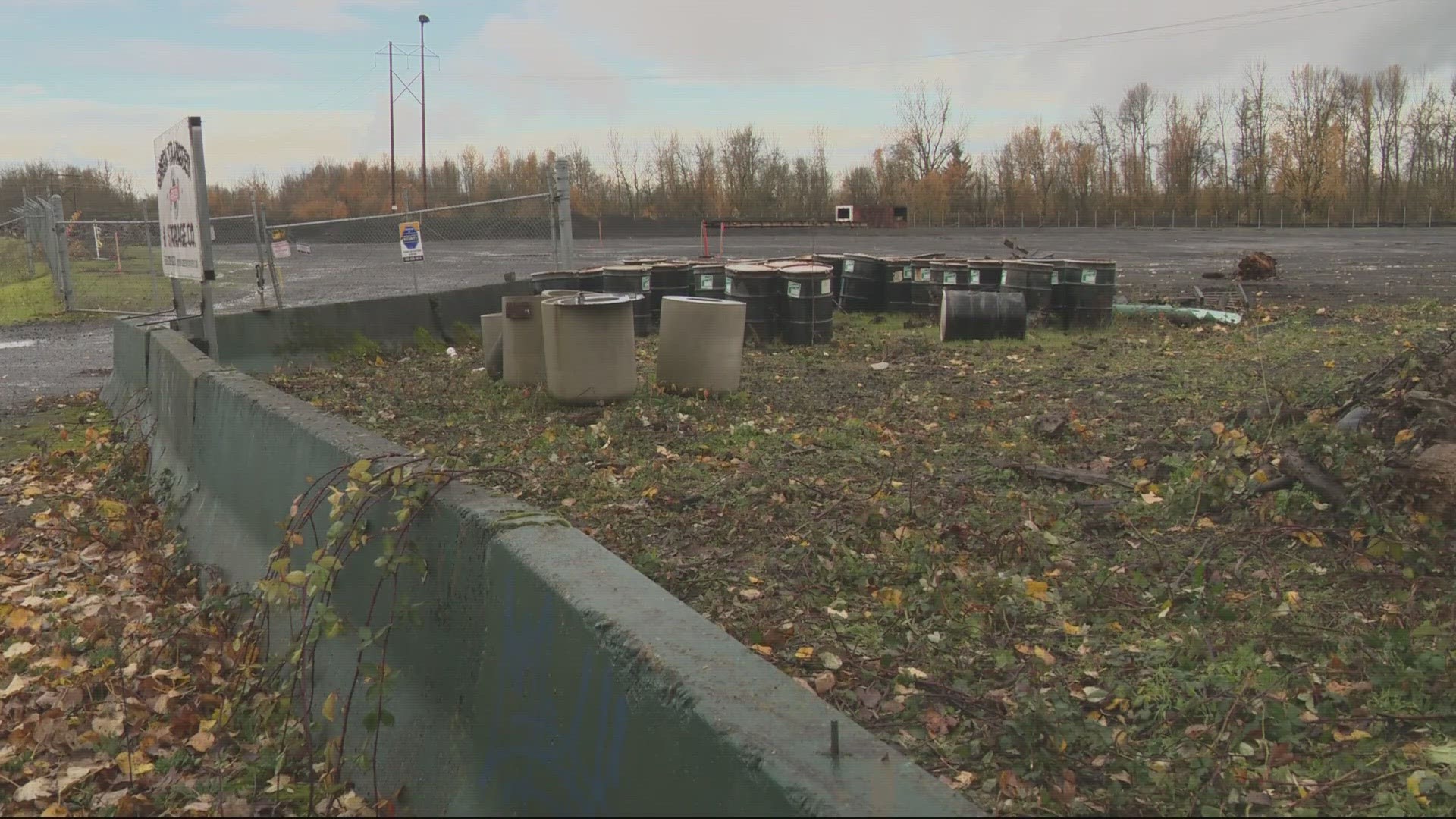PORTLAND, Ore. — Much of the land along the Columbia Slough in North Portland is known for its long history of industrial use, and its resulting high likelihood of contamination.
“I’ve started calling this area a 'brownfield sandwich,'” said Dale Svart, who lives near the plot of land in North Portland that the city soon expects to house nearly 200 homeless people. It’s across the street from a wastewater treatment plant and borders the Columbia Slough.
Back in October, Mayor Ted Wheeler announced plans to use that land for the city’s second mass sanctioned homeless camp, also known as a Temporary Alternative Shelter Site (TASS).
“We can’t place the most vulnerable people in our community on an already toxic site; it’s just adding to their burden … This site is not a safe site,” said Charlotte MacDonald, another neighbor.
The site was once used for boat manufacturing. About 10 years ago, the Oregon Department of Environmental Quality found toxins in the site’s soil.
“They broke things apart, cleaned things, repaired things, and that means a lot of different contamination over many decades,” said Lauren Wirtis, communications director for the DEQ. “That could mean that there are different kinds of metals on the property — so if you think about boats that have paint on them, paint used to have lead in it.”
Portland’s Bureau of Environmental Services now owns the property, and they must test the soil before any shelter can be built. Samples have been collected and are now being processed. The DEQ is still waiting for those results.
“We’ll probably find something. What we’re waiting to find out is how much and of what contamination, so we know what risk that poses,” said Wirtis.
If those test results show the site is contaminated — which experts like Wirtis believe that it could be — it’s not clear yet how much it would cost or how long it would take to clean up. That whole process would fall be the city's responsibilities before homeless people could move in.
“I actually don’t have a problem with this being a site if it was clean,” said Svart.
A spokesperson for the city’s TASS sites said their goal is to open the site in the coming months, with the timeline being dictated by site conditions.
“I’m really concerned that the city is moving way too fast and doing it for some kind of other purpose. I don’t think they just care about the people. I think they want to check a box that they did a solution,” said MacDonald.
The city spokesperson said they would not shelter anyone on a site that wasn't safe. They added:
“Regarding contamination on this site, the BES Site Assessment Team has been assessing this site regularly for at least two decades. The property sat empty for years, except for illegal dumping and frequent unsanctioned camping, including people squatting in the dilapidated garage-like structure on site. The City has begun minimal site preparation that doesn’t disturb the soil, including removing barrels, trash, and more than 3,000 tires from the property.
"The site has been undeveloped for years, but now that it has an actual proposed use (RV shelter) the BES Site Assessment Team is performing a new Risk Assessment to understand current conditions with that use in mind. This Risk Assessment will encapsulate the results of the new testing, identify risks, and ensure there are no complete exposure pathways. This report will feed into the City’s mitigation plan for constructing and operating the temporary shelter. DEQ will review, advise, and approve the City’s Risk Assessment and mitigation plan.
"The City’s goal is to not only make this site suitable for this temporary shelter use but to also create a secure, safe, and clean property for various potential future uses … This project falls into the category of a 'brownfield development' — a practice that is routine and safe, as it is directed by DEQ protocols and guidance.”
City leaders met with neighbors Thursday night about the site and heard their concerns including those about land safety.

